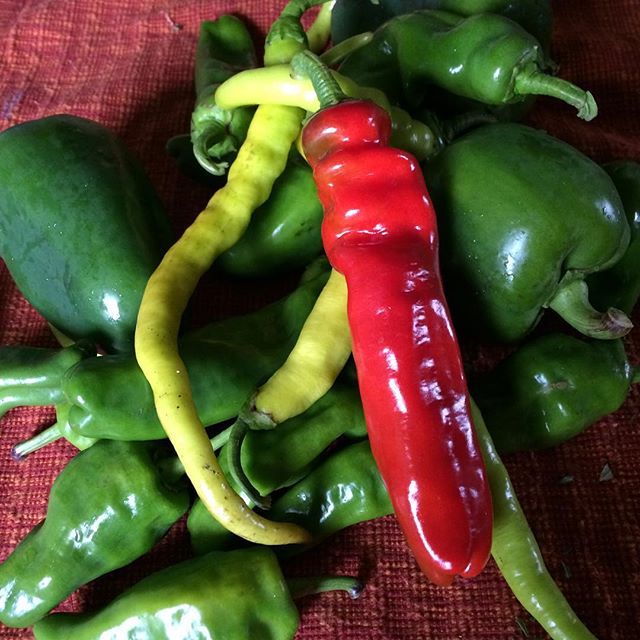Quick Hit, 2 minute read. Baby steps, right? I will preface this by saying that while I am working myself up to hotter peppers, I am nowhere NEAR super-hot level fresh. This guide is for those of you who don’t like spice at all, but want to expand your palate. I have made it up to eating raw Poblano and intend to keep going up the Scoville scale. I can handle Thai bird peppers now, in small amounts incorporated in salsas and sauces. I also make Jerk Chicken with habanero peppers. But I had to start at the lowest heat to get to where I am now.
My guide assumes fresh eating the flesh, not the seeds. The seeds and the white pith inside the pepper are generally much hotter than the fruit flesh of any hot pepper.

SHU-Scoville Scale.
Low Heat Peppers for Fresh Eating
Pepperoncini – SHU of 100-500.
Shishito – SHU 100-1000
Cubanelle – SHU 500-1000
Peppadew – SHU 1000
Tobago Seasoning – SHU 500-1000
Aji Dulce – SHU 1000-5000

Honorable Mention: Arroz Con Pollo pepper. There is a slight variability of heat in this pepper, from none to a bit spicy. Do a test slice first. The flavor of this pepper is sublime, unique. I highly recommend trying one.

Heat in a pepper is determined by many factors. One in particular is the proximity to other hotter or milder peppers during the previous generation, when the fruits were pollinated. Since often there is no way to have this information unless you collect your own seeds, tread carefully if you are new to heat. I’ve tasted many peppers that were supposed to be low heat and they most certainly were not. Thank heavens for milk nearby! I’ve also tasted some peppers on this list that were milder than I expected, meaning it’s likely the parent plants were likely grown by and pollinated from nearby milder peppers.
If a pepper is rumored to have any heat, I will nibble or cut a thin slice from the end of the fruit -generally the mildest part- as a test before I dig in for a raw bite.
Happy Gardening!
The End
